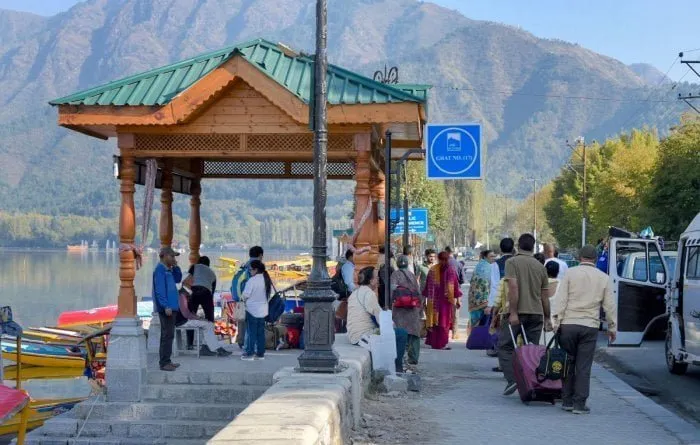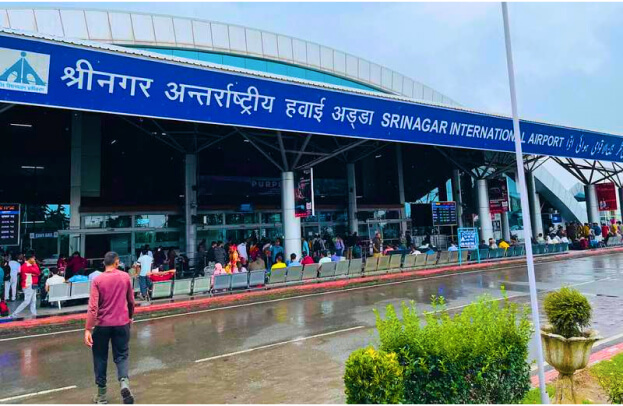Restoration of Statehood: A Prerequisite for Tourism Growth in Jammu and Kashmir
By: Javid Amin | 12 September 2025
The Fragile Pulse of Kashmir’s Tourism Sector
For decades, tourism in Jammu and Kashmir has been more than an economic activity—it has been a lifeline, a cultural bridge, and a symbol of resilience. From the snow-laden slopes of Gulmarg to the spiritual serenity of Hazratbal, the region has drawn travelers, pilgrims, and seekers from across the globe. But beneath the postcard beauty lies a reality that is increasingly difficult to ignore: Kashmir’s tourism sector is in crisis, and the absence of statehood is a major contributor.
Since the revocation of Article 370 and the bifurcation of the state into Union Territories in 2019, the region has witnessed a centralization of power, a decline in local governance, and a disconnect between policy and ground realities. While the government touts infrastructure projects and promotional campaigns, the lived experience of Kashmir’s business owners, hoteliers, transporters, and artisans tells a different story—one of uncertainty, stagnation, and emotional fatigue.
This article explores why restoring statehood is not just a political demand, but a strategic necessity for reviving tourism and rebuilding public trust in Jammu and Kashmir.
Understanding Statehood and Its Impact on Local Governance
What Is Statehood?
Statehood refers to the constitutional status of a region having its own legislative assembly, executive authority, and judicial autonomy. In the Indian context, a state has the power to make laws on subjects listed in the State List, including tourism, public health, and local infrastructure.
Why Does It Matter?
In a Union Territory (UT), these powers are largely controlled by the central government or its appointed administrators. This shift has led to:
- Delayed decision-making
- Lack of local accountability
- Reduced responsiveness to regional needs
For a region like Jammu and Kashmir, where tourism is deeply intertwined with culture, emotion, and seasonal dynamics, this disconnect can be devastating.
The Economic Anatomy of Kashmir’s Tourism Sector
Pre-2019: A Vibrant Ecosystem
Before the revocation of statehood, Kashmir’s tourism sector contributed significantly to the region’s GDP. It supported:
- Over 200,000 direct jobs in hospitality, transport, and retail
- Thousands of indirect livelihoods in handicrafts, agriculture, and local services
- A thriving cultural exchange that helped counter negative stereotypes
Post-2019: A Sector in Decline
Since the transition to UT status, the sector has faced:
- Frequent internet shutdowns
- Security-related travel advisories
- Reduced promotional budgets
- Delayed policy implementation
The result? A sharp decline in tourist footfall, business closures, and rising unemployment.
Tourism Needs Local Eyes, Not Distant Hands
Why Centralized Governance Fails Tourism
Tourism is a hyper-local industry. It requires:
- Real-time feedback from stakeholders
- Quick policy adjustments based on seasonal trends
- Cultural sensitivity in messaging and outreach
A centrally administered UT often lacks the agility and empathy needed to manage these nuances. Decisions are made in Delhi, while the consequences are felt in Srinagar, Pahalgam, and Doda.
Case Study: Winter Tourism Mismanagement
In recent years, the absence of a winter preparedness roadmap has led to:
- Poor road maintenance during snowfall
- Lack of heating infrastructure in tourist zones
- Cancellation of cultural festivals due to administrative delays
Had there been a locally elected government, these issues could have been addressed proactively.
Emotional Equity and Public Trust
Tourism Is Not Just Business—It’s Identity
For Kashmiris, tourism is a way to share their story, their hospitality, and their heritage. It’s a form of emotional expression and cultural pride. When governance becomes impersonal and distant, it erodes this emotional equity.
The Psychological Cost of Disempowerment
Business owners report not just financial losses, but:
- Loss of dignity
- Feeling unheard and unseen
- Erosion of hope
Restoring statehood would signal a return to self-respect, representation, and regional pride—all of which are essential for a thriving tourism sector.
Infrastructure, Investment, and Innovation
What Statehood Enables
With a functioning state government, Kashmir could:
- Launch region-specific tourism incentives
- Invest in eco-tourism and heritage preservation
- Build smart infrastructure tailored to local geography
- Promote digital marketing and global outreach
Without Statehood: A Policy Vacuum
Currently, there’s no clear roadmap for:
- Reviving handicraft exports
- Promoting offbeat destinations
- Supporting youth entrepreneurship in tourism
This vacuum leads to missed opportunities, wasted resources, and public disillusionment.
Voices from the Ground
Testimonials from Local Stakeholders
“We used to get winter bookings by September. Now it’s December and we’re still waiting.” — Hotelier, Gulmarg “Tourism is our bread and butter. Without statehood, we’re just shouting into the void.” — Shikara owner, Dal Lake “We’ve survived floods, shutdowns, and curfews. But this silence from governance is the hardest.” — Artisan, Pulwama
These voices reflect a collective yearning for autonomy, dignity, and revival.
Strategic Recommendations
1. Restore Statehood with Legislative Powers
Empower local leaders to craft tourism policies that reflect ground realities.
2. Form a Kashmir Tourism Revival Council
Include hoteliers, transporters, artisans, and youth representatives.
3. Launch a “Kashmir Is Ready” Campaign
Use digital platforms to showcase safety, hospitality, and winter readiness.
4. Demand Transparency from the Tourism Department
Publish budgets, plans, and performance metrics.
5. Engage National Media and PMO
Draft a memorandum highlighting economic losses and revival proposals.
The Road Ahead
Restoring statehood is not a silver bullet—but it’s a foundational step. It’s about giving Kashmir the tools to heal, rebuild, and thrive. Tourism is more than an industry here—it’s a symbol of peace, pride, and possibility.
Bott0m-Line: Revival Begins with Representation
Kashmir doesn’t need pity—it needs policy. It doesn’t need slogans—it needs statehood. The restoration of autonomy is not just a political demand—it’s a strategic imperative for tourism growth, economic revival, and emotional healing.
Let the mountains speak again. Let the lakes reflect hope. Let Kashmir be governed by those who know its soul.




